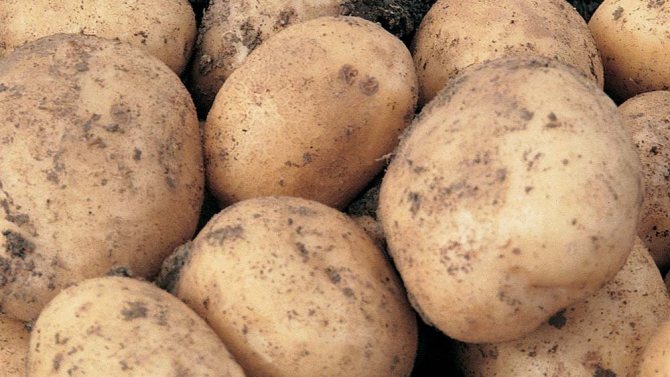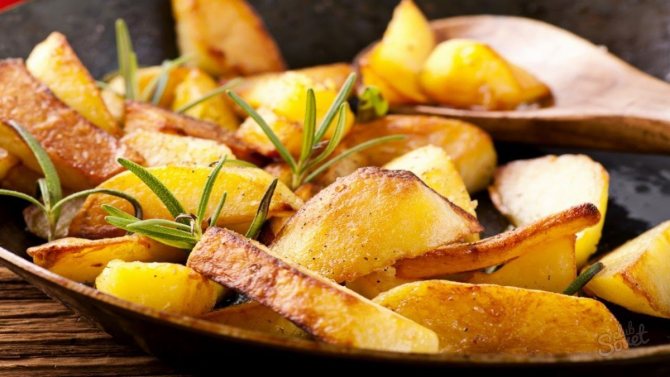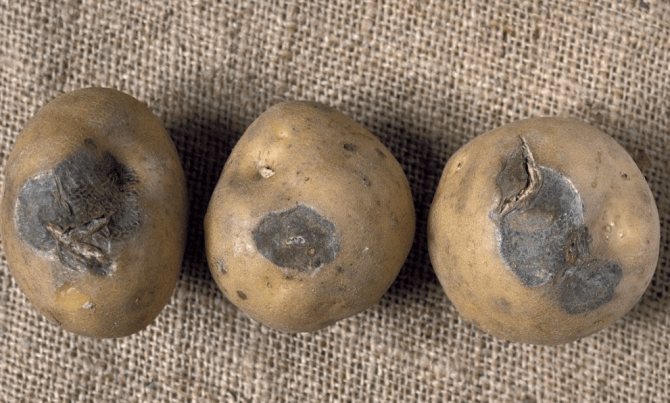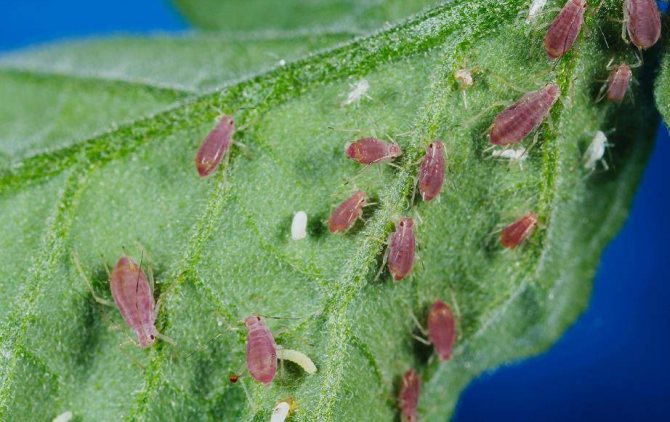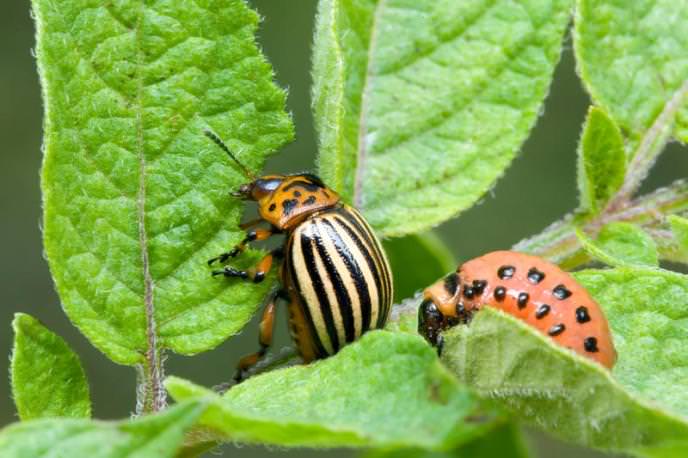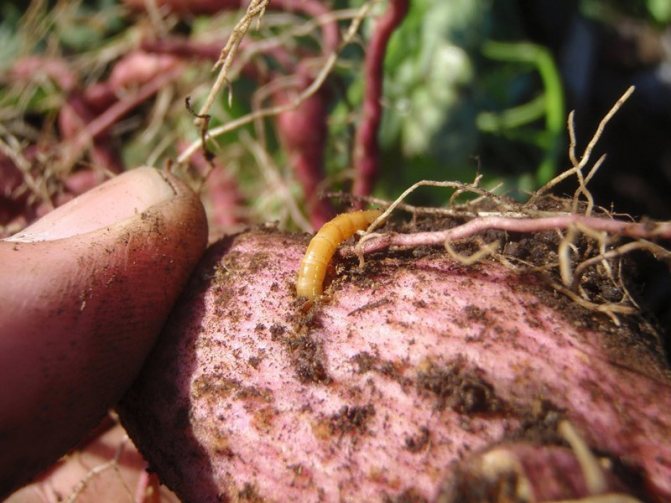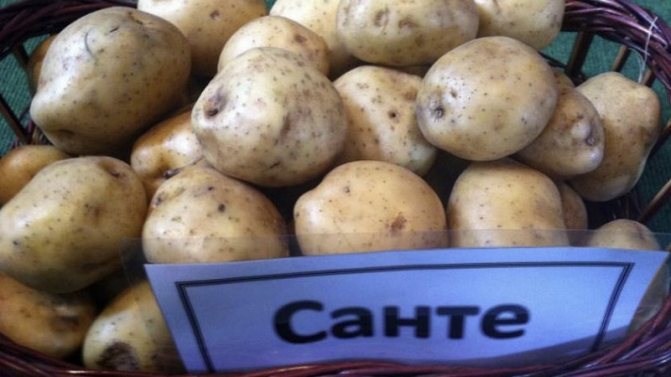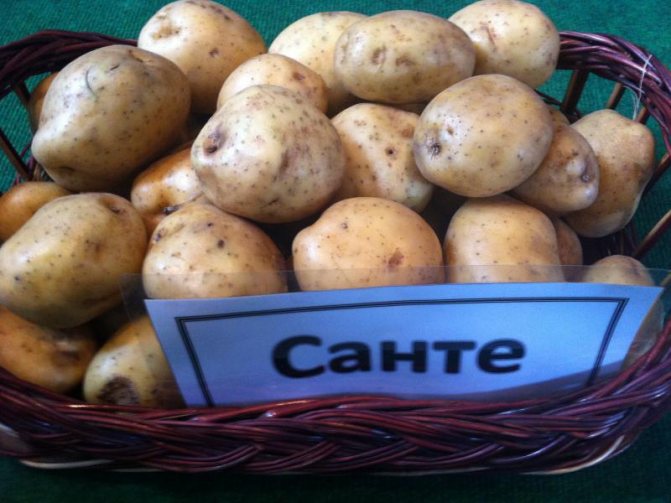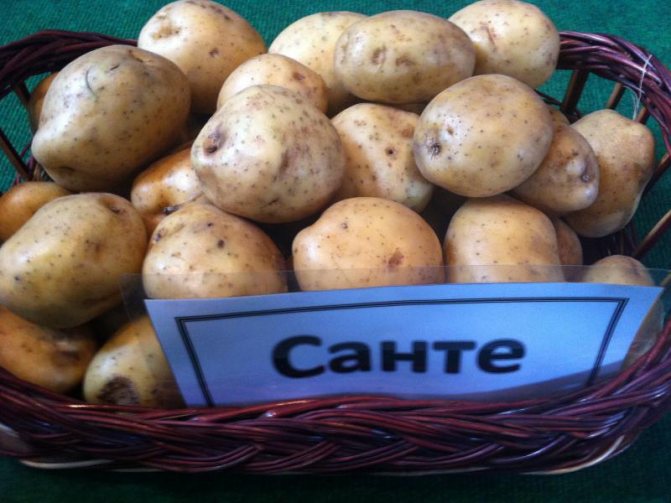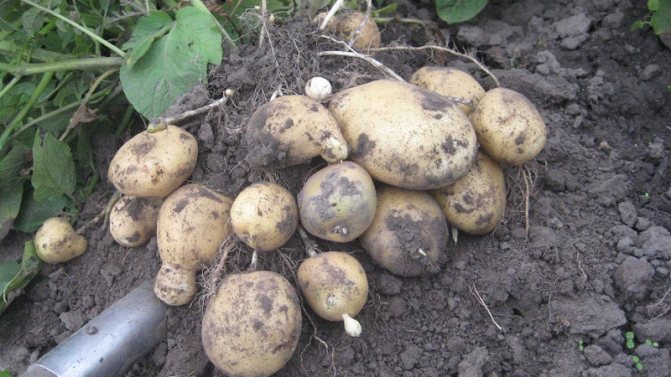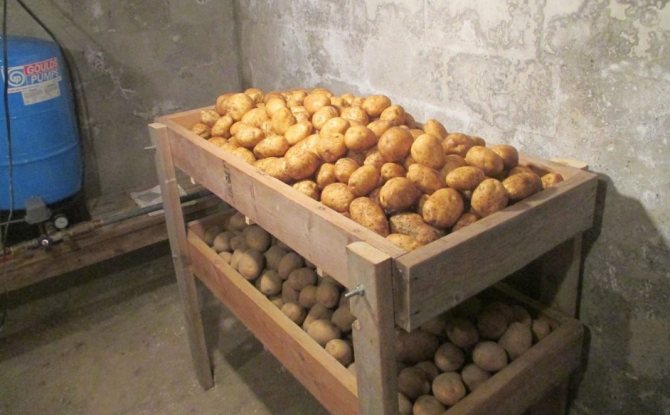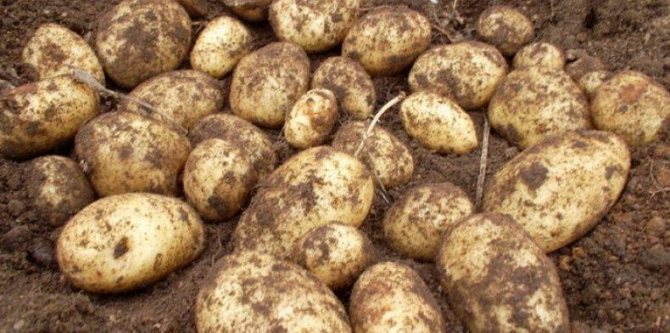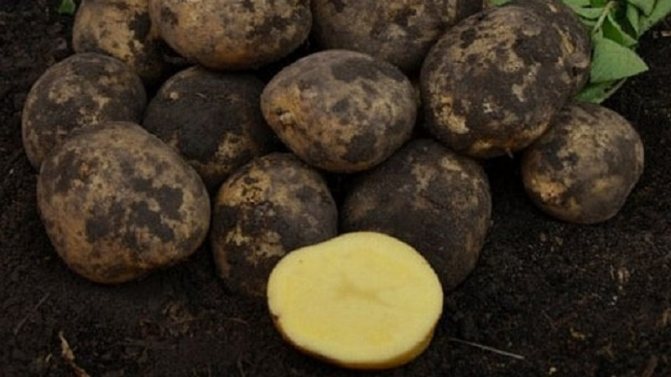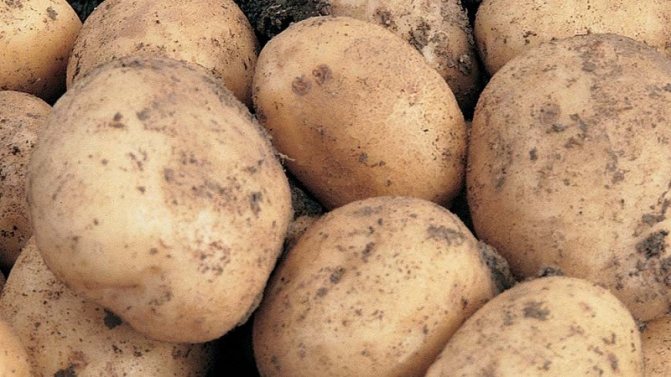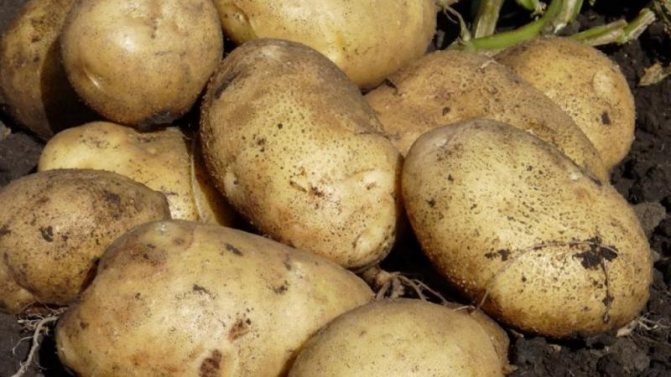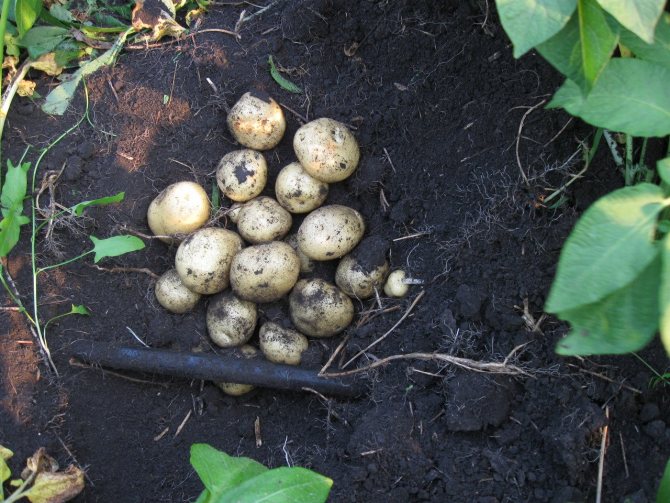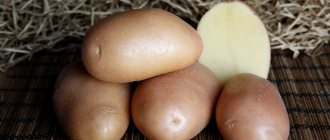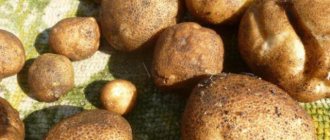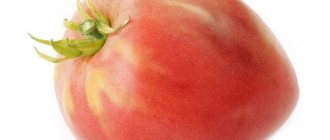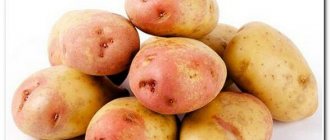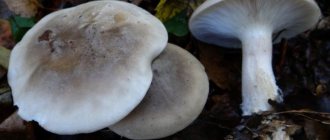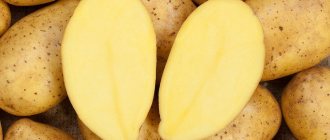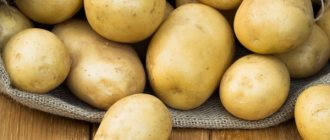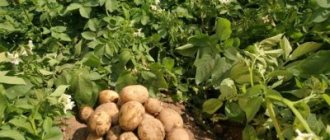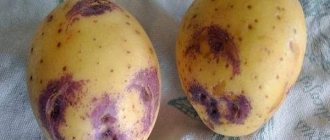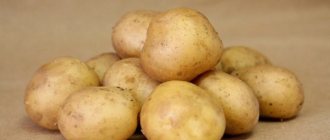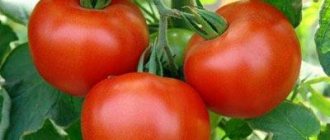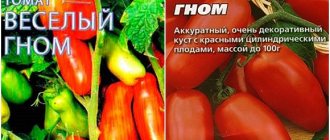Santa potatoes variety description
| Variety name | Santa |
| general characteristics | Mid-season Dutch variety with good yield and taste |
| Ripening period | 85-90 days |
| Starch content | 10-14% |
| Mass of marketable tubers | 90-120 gr |
| The number of tubers in the bush | up to 20 |
| Yield | up to 570 c / ha |
| Consumer qualities | good taste, suitable for fries and frying |
| Keeping quality | 92% |
| Peel color | yellow |
| Pulp color | light yellow |
| Preferred growing regions | middle lane and south of Russia |
| Disease resistance | prone to late blight, susceptible to scab |
| Growing features | suitable for organic farming |
| Originator | Agrico U.A (Netherlands) |
- tubers are large, weighing from 100 to 150 g;
- oval or round-oval shape;
- the tubers are even, neat;
- the peel is yellow, evenly colored, moderately dense, smooth;
- the eyes are superficial, shallow, inconspicuous, but numerous;
- the flesh on the cut is light yellow;
- the starch content is low, ranging from 10 to 14.2%;
- high content of dry matter, B vitamins and carotene.
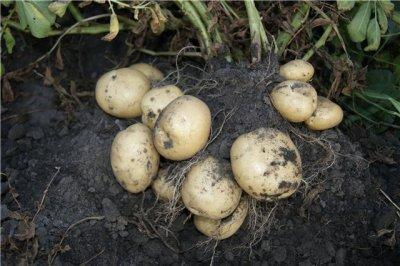
Agronomist tips and reviews
Following these simple rules will help you get a good harvest of Santa potatoes.
- Santa loves sunshine, so do not choose a shade planting site.
- The soil should be oxygen-rich, fertile and light.
- It is optimal to plant potatoes in an area where legumes, cabbage, radish or phacelia grew.
- The site allocated for planting must be dug up in the fall and immediately before disembarking. It will not hurt to apply mineral fertilizers.
- Potatoes can be planted only when the danger of frost has passed. It is recommended to plant in late April - early May, but the best option would be to land after the May holidays. During this period, the soil is already warmed up to 10 cm deep, and the risk of frost is reduced to almost zero.
- Be sure to remove weeds from the area where the potatoes are planted. Carry out the harrowing procedure twice a season. Pay proper attention to watering, especially during the flowering period. However, do not overdo it, otherwise there is a great risk of rotting tubers.
- Timely destroy pests - in particular, the Colorado potato beetle. Treat with insecticides if necessary.
- Harvesting can begin 80 days after the first shoots appear. Do not over-harvest the potatoes to avoid insect damage to the tubers.
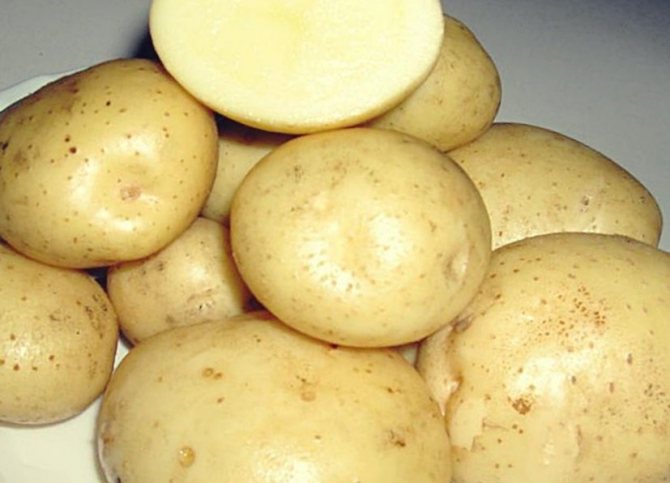

Santa's potatoes must be harvested in a timely manner and dried thoroughly
Reviews of potatoes
I planted Santa, in the first year I freed the "peas" for the second, I did not leave it, but this is on muddy black soil, you may have it differently.
MarinaF
I like the Santa variety, it is perfect for frying, and indeed a very worthy variety with good yield and taste.
Inna
Sante, old variety, very cool, delicious potatoes. Grew up for 3 years. This year a friend begged for seed. Each variety has its own peculiarity in the power of the tops. Red Scarlett has tiny bushes, while Sante has big ones.
Asemenych
Sante from bi to rhizik varieties, not stable variety, sometimes empty or thick.
andriiko87
Characteristics and taste
Santa - mid-early table variety... From the moment of planting to harvesting, 80-90 days pass.The yield is good, the harvested root crops are perfectly stored.
The potatoes are beautifully shaped, ideal for sale or industrial processing. The rind is thin but firm, good protects root crops from mechanical damage.
The yield depends on the region and growing conditions. Depending on the nutritional value of the soil, it ranges from 270 to 570 centners per hectare.
For comparison, the table below presents data on the yield of other potato varieties:
| Variety name | Yield |
| Santa | up to 570 c / ha |
| Crown | 430-650 c / ha |
| Lileya | up to 670 c / ha |
| American | 250-420 c / ha |
| Pretty boy | 170-280 c / ha |
| Blue Danube | 350-400 c / ha |
| Palm | up to 450 c / ha |
| Typhoon | 400-450 c / ha |
| Jelly | up to 550 c / ha |
| Gourmet | 350-400 c / ha |
| Red Fantasy | 260-380 c / ha |
Bushes are erect, of medium height, intermediate type. The branches are moderately spreading, the formation of green mass is average. The leaves are small, simple, dark green.
Large white flowers are collected in compact corollas. The root system is well developed, 15-20 tubers are formed under each plant.
Potatoes are quite thermophilic, planting begins in late springwhen the threat of frost has passed. Plants develop best at high air temperatures (up to 29 degrees) and moderate humidity.
Excessive heat and drought halt the growth of tubers. For optimal productivity, watering and feeding with alternating mineral and organic fertilizers are recommended.
The Santa variety is resistant to the main diseases of the nightshade: potato crayfish, cyst nematode, common scab, and various viruses. Moderate susceptibility to late blight of tops and tubers.
Under unfavorable conditions, it is possible to be affected by rhizoctonia or black leg.
Santa's potatoes taste. Sante potatoes have a pleasant rich taste, without excessive dryness or wateriness. Due to the small amount of starch, the tubers do not boil down, keeping their neat shape.
Potatoes do not darken during processing and cooking. Ideal for deep-frying, cooking chips, vegetable mixes, dressing soups, stuffing, baking. It is possible to prepare semi-finished products on an industrial scale.
The variety is ideal for restaurant cuisine, root vegetables cook quickly, and look very attractive. Not suitable for mashed potatoes. Stores well.
Read more about the terms and temperature of storing potatoes, about possible problems. And also how to store in winter, in boxes and on the balcony, in the refrigerator, cleaned.
Agrotechnics
Santa belongs to medium early varieties, mature tubers are formed 80-90 days after planting... There is no need to carry out any special preliminary measures before landing.
To get potatoes with the highest possible taste, follow a few rules:
- Change the planting material once every five years.
- Plant the tubers in the soil where legumes, cabbage, or radishes used to grow.
- Apply organic and mineral fertilizers in moderation and do not overdo it.
- The optimum soil temperature for Santa's growth is 27-29 degrees. In hotter weather, growth slows down and ripening time increases.
- All other care activities are carried out in the same way as for most other varieties.
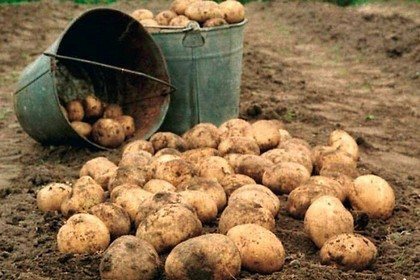

The optimum soil temperature for Santa's growth is 27-29 degrees
Photo
The photo shows potatoes of the Santa variety
Gardeners' opinion
Good day. For residents of the Northwest region, I would like to recommend Santa's potatoes. The medium early variety shows good results in poor soil. For best results, it is important to prepare the soil in the fall. For root formation, it is necessary to fertilize the soil in advance.The plant shows the best yield under warm summer conditions and responds positively to drip irrigation. Potatoes are stored for a long time and have good taste. Recommend!
Ekaterina Valentinovna, 55 years old.
Good afternoon! I would like to recommend Santa's potato variety to all vegetable growers in the Urals. The plant of the Solanaceae family is distinguished by resistance to many diseases, simple care and good taste of root vegetables. Up to 15 potatoes can be harvested from one bush. After 90 days, the crop is ready for harvest. For best results, you should weed the soil, fertilize the plant, and do drip irrigation. I harvest the crop three months after planting. After harvesting, it is necessary to dry the potatoes, this will extend their shelf life. The root vegetable is great for frying, boiling and stewing. I put a plus on mashed potatoes, the taste is excellent. I did not find any minuses for myself! The family is happy, next year I plan to increase the planting area.
Read also: Potatoes - Blueness: description and characteristics of the variety, photos, reviews
Advantages and disadvantages
TO main merits varieties include:
- high taste of root crops;
- early amicable ripening;
- excellent productivity;
- harvested tubers are well stored;
- versatility of root crops;
- potatoes are suitable for sale;
- resistance to mechanical damage;
- unpretentious care;
- drought resistance;
- seed material does not degenerate;
- resistance to major diseases.
The features of the variety include love of warmth and frost intolerance... At low temperatures, yields are greatly reduced. The variety is sensitive to soil nutrition.
To compare the characteristics of Santa with other potato varieties, take a look at the table below:
| Variety name | Starch content | Keeping quality |
| Santa | 10-14% | 92% |
| Openwork | 14-16% | 95% |
| Desiree | 13-21% | 95% |
| Santana | 13-17% | 92% |
| Nevsky | 10-12% | good, but the tubers germinate early |
| Ramos | 13-16% | 97% |
| Taisiya | 13-16% | 96% (tubers have a long dormant period) |
| Bast | 13-16% | 94% |
| Rodrigo | 12-15% | 95% (not prone to freezing) |
Harvesting
The ripening dates for Santa's potatoes are at the end of July. Yellowing of the stems and "collapsed" bushes serve as a signal for harvesting. In order for the tubers to "ripen", the tops are mowed 10-12 days before harvesting. This simple technique will allow the skin of the potato to become denser and in the future will protect it from injury during harvesting.
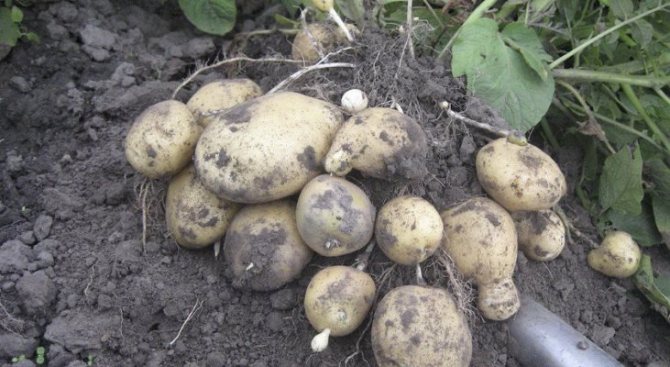

On private households, Santa is dug by hand in dry weather. The tubers are allowed to “lie down” for several hours. After that, they are sorted out, the healthy ones are sent to storage in the basement, and the damaged potatoes are used for food.
Attention!
During harvesting, tubers from the most productive bushes are harvested separately and used for planting the next year.
Storage rules
Store potatoes in well-ventilated cellars or storage facilities. The temperature in such rooms is maintained at + 2-4˚С, and the humidity at 90%. During the winter, make sure that Santa's tubers do not germinate. When sprouts appear, they are broken off.
Origin
The Santa potato variety is bred by Dutch breeders. Included in the State Register of the Russian Federation in 1993. Zoned for the Central, Volgo-Vyatka, North, North-West, Lower Volga, Ural, West Siberian, Far Eastern regions.
It is possible to grow on an industrial scale, as well as in farms and personal subsidiary plots. The harvested crop is well stored, transportation is possible. The commercial qualities are unchanged for several months after harvest.
Agrotechnics
For the harvest to be plentiful and of high quality, "Santa" potatoes, like any other crop, need good care.
For planting, you need to select even tubers with a large number of eyes. In order for the potato to sprout faster, it is recommended to germinate it. To do this, boxes with tubers are removed from the cellar in 1-2 weeks and placed in a warm place with a temperature of at least 15 degrees.
Read also: Why do tomato seedlings fall off leaves
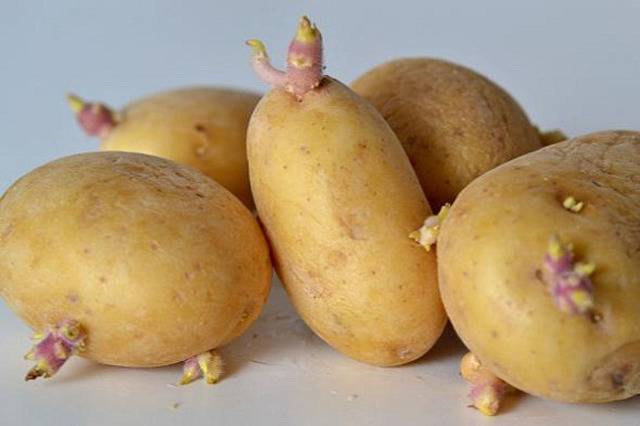

The sprouts must be at least 0.5 cm long before planting. Longer ones break off when landing. The presence of light in the room is very important, since in the dark the sprouts will become white, elongated and lifeless.
TIP! After preparing the seed tubers, leave them in direct sunlight for a few days. The fruits will turn green, and therefore will be better stored. Yes, and rodents bypass such potatoes.
The soil for replanting is prepared in the fall. The beds are dug up and manured. You can also add mineral fertilizers and wood ash. In the spring, manure and other top dressing is not recommended, as they can cause disease in potatoes.
The necessary fertilizers for the normal development of the plant are potassium and phosphorus, but it is better not to overdo it with nitrogen fertilizing, as this can reduce the yield.
The tubers are planted at a distance of 0.3-0.4 m from each other, since the root system of the plant is highly developed. A distance of 0.4-0.5 m is maintained between the rows. This distance will facilitate the hilling of the furrows and allow the plants to freely settle in the garden bed.
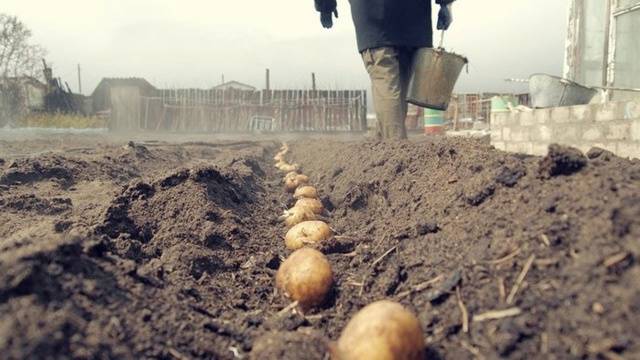

Planting depth depends on the type of soil. On clay soils, loose ridges are made and tubers are planted to a depth of 5 cm.If the soil is sandy, then it is permissible to deepen the potatoes by 13-15 cm.
Potato "Santa" belongs to the thermophilic varieties, and therefore it does not make sense to plant it early. If frost occurs, then the seeds will simply freeze. The soil temperature during planting should reach +9 degrees. In colder soil, potatoes simply will not grow and will begin to lag behind in development. This will lead to a significant decrease in yield.
The best conditions for the growth and development of potatoes are moderate humidity and temperatures from +23 to +28 degrees. If the summer is warm, the harvest will be of high quality and abundant.
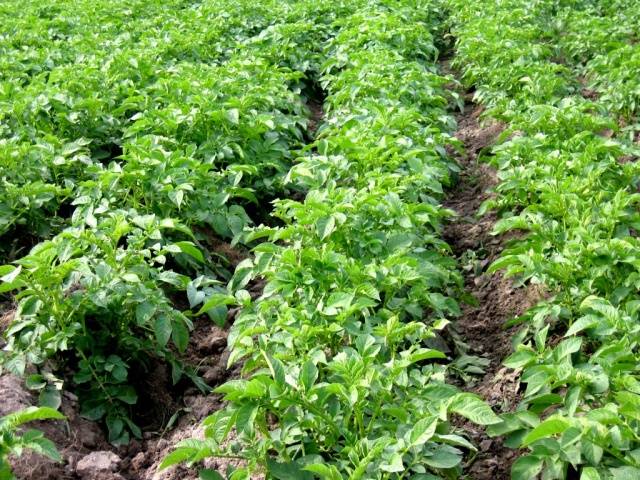

The main care for potatoes is timely hilling, watering, removing weeds and feeding. However, if there is enough rain, then the potatoes do not need additional moisture.
As for fertilizers, you should not get carried away with them. This is especially true for organics. They contain a lot of nitrogen, and this will lead to the development of the ground part of the plant to the detriment of root crops.
Hilling is necessary to give the tubers access to oxygen and to loosen the soil. This event is traditional for all types of potatoes. In addition, weeds are destroyed during these works.
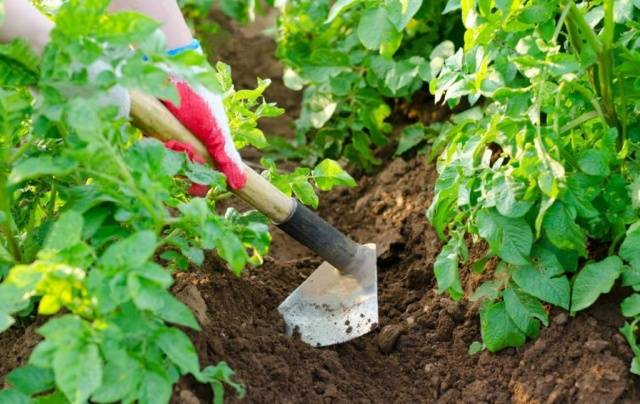

Harvesting
Harvesting is done 80-90 days after planting. Before digging up the potatoes, it is recommended to mow the ground part and leave the tubers in the ground for a few more days. These actions will improve the keeping quality of the potatoes. The skin will become stronger and therefore less likely to damage the tubers during digging and transport.
Before sending potatoes for storage, they must be thoroughly dried. If the summer was too humid, and a lot of soil adhered to the fruits, the tubers are washed before drying.
Growing features
Agricultural technology for this variety is standard. The variety is thermophilic, planting begins when the soil is completely warmed up. The soil is thoroughly loosened, plant residues and other unnecessary inclusions are selected. Old humus or wood ash is laid out on the holes. Tubers are planted at a distance of 35-40 cm, to a depth of no more than 10 cm. Wide row spacings are required. After hilling, high ridges are left. Mulching will help control weeds.
Potatoes love moderately moist soil. The ideal option is to organize drip irrigation. Top dressing is applied twice a season.
Mineral complexes with potassium, magnesium and phosphorus are preferred, as well as organic matter (diluted mullein or bird droppings). An overabundance of nitrogen-containing fertilizers (urea or ammonium nitrate) leads to abundant growth of tops to the detriment of the development of tubers.
Read more about how to feed potatoes, when and how to fertilize, how to do it when planting.
Seed material is collected from the best, most productive bushes. They must not be affected by pests or viruses.
Suitable plants are marked in advance, after digging, the potatoes are sorted, dried and stored separately. The Santa potato variety is not prone to degeneration, however, the seed is recommended to be renewed every 5-6 years.
Potatoes calmly endures mechanized harvesting, tubers are resistant to mechanical damage. After harvesting, thorough drying is required, followed by sorting.
The use of various chemicals in potato cultivation is controversial and controversial. We bring to your attention useful information about why and how herbicides and insecticides are used in growing potatoes.
Care rules
After the emergence of seedlings, the first watering is carried out with a rate of 2.5-3 liters per plant. In the future, planting is watered every 4-7 days, depending on the weather. Watering is especially important in the budding and pouring phase. The irrigation rate is calculated so as to achieve soil moisture to a depth of 20-25 cm (on average 4-6 liters per bush). To retain moisture the day after watering, the soil is loosened.
A very important measure for the care of potatoes is hilling. The bushes are piled up 3 times: when the plants grow to a height of 20 cm, and 2 more times with an interval of 2-3 weeks. During this procedure, the Santa bushes are sprinkled with moist soil almost completely, leaving only the tops with a few leaves on top.
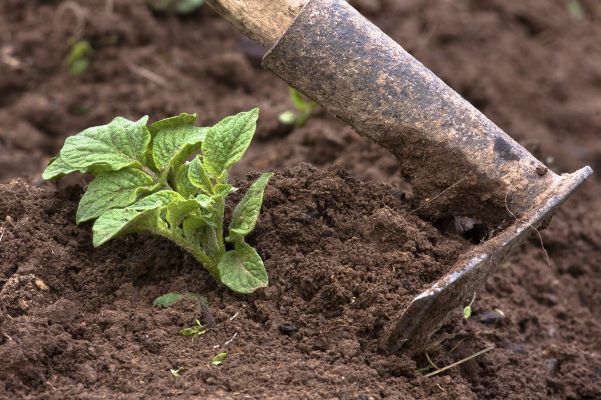

Attention!
Hilling potatoes is carried out only if the soil is moist. Therefore, a few days before this planting procedure, be sure to water or spud the planting the next day after the rain.
Throughout the entire growing period, the plantings are kept in a weed-free state.
During the growing season, Santa potatoes are fed 3 times:
- after the emergence of mass shoots - fertilizers containing nitrogen;
- during budding - potassium sulfate or wood ash;
- during the flowering period (during this period, potatoes intensively form tubers) - superphosphate.
Fertilizers are applied exclusively to moist soil.
Diseases and pests
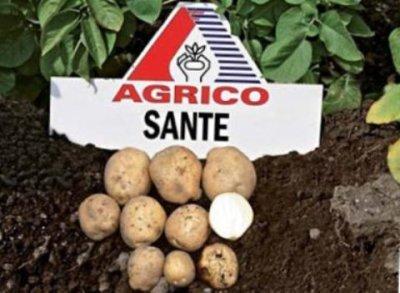

Sante potato variety resistant to most dangerous diseases: potato crayfish, common scab, cyst nematode, tobacco mosaic viruses, leaf curling or wrinkling.
Moderately resistant to late blight. For prophylaxis, it is recommended to treat plantings with medicinal preparations. Periodic change of planting sites will also help to avoid infections.
Ideal predecessors: meadow grasses, cabbage, legumes. Fields on vacation can be sown with oil radish or phacelia.
Counteracting disease
The variety has a fairly high immunity, which protects the vegetable from most diseases:
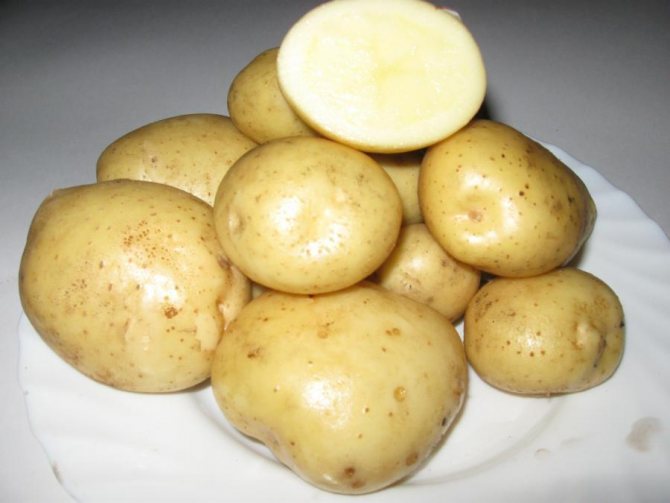

- Cancer.
- Scab.
- Nematode.
- Mosaic viruses.
Unfortunately, the variety is not resistant to late blight. In general, like many other varieties, such as Romano, Picasso and others. In order not to face this disease, it is necessary to process the holes and leaves of potatoes. Also, the ideal option for the prevention of late blight is to change the landing site.
Recommended reading: "Romano Potatoes"
Potato bushes are often attacked by Colorado beetles. Moreover, it is very difficult to withdraw them. To prevent the appearance of colorado, it is necessary to huddle the beds, periodically spray the bushes with special chemistry.
The characteristic of the Santa variety makes it in demand both on store shelves and for personal purposes. It has good keeping quality, it is easy to grow due to its unpretentiousness.

